The great thing about social media is that you can track almost every single detail through social media metrics. The tough thing about social media is that… you can track almost every single detail through social media metrics.
The art of effective social media measurement is understanding which metrics matter most to your business, based on your goals.
The number of metrics you track will depend on the size of your budget and the size of your team, as well as your business objectives. Here are some of the most important social media success metrics to track in 2022. Where available, we’ve included benchmarks that will help you set realistic performance goals.
Bonus: Get a free social media report template to easily and effectively present your social media performance to key stakeholders.
What are social media metrics?
Social media metrics are the data points that show you how well your social media strategy is performing.
Helping you understand everything from how many people see your content all the way through to how much money you earn from social media, metrics are the building blocks for ongoing improvement and growth.
16 most important social media metrics to track in 2022
Awareness metrics
These numbers show how many people see your content and how much attention your brand gets on social media.
1. Reach
Reach is simply the number of people who see your content. It’s a good idea to monitor your average reach, as well as the reach of each individual post, story, or video.
A valuable subset of this metric is to look at what percentage of your reach is made up of followers vs. non-followers. If a lot of non-followers are seeing your content, that means it’s being shared or doing well in the algorithms, or both.
Source: Instagram Insights
2. Impressions
Impressions indicates the number of times people saw your content. It can be higher than reach because the same person might look at your content more than once.
An especially high level of impressions compared to reach means people are looking at a post multiple times. Do some digging to see if you can understand why it’s so sticky.
3. Audience growth rate
Audience growth rate measures how many new followers your brand gets on social media within a certain amount of time.
It’s not a simple count of your new followers. Instead, it measures your new followers as a percentage of your total audience. So when you’re just starting out, getting 10 or 100 new followers in a month can give you a high growth rate.
But once you have a larger existing audience, you need more new followers to maintain that momentum.
To calculate your audience growth rate, track your net new followers (on each platform) over a reporting period. Then divide that number by your total audience (on each platform) and multiply by 100 to get your audience growth rate percentage.
Note: You can track your competitors’ progress the same way if you want to benchmark your performance.
Engagement metrics
Social media engagement metrics show how much people interact with your content, as opposed to just seeing it.
4. Engagement Rate
Engagement Rate measures the number of engagements (reactions, comments and shares) your content gets as a percentage of your audience.
How you define “audience” may vary. You might want to calculate engagement relative to your number of followers. But remember that not all your followers will see each post. Plus, you might get engagement from people who don’t (yet) follow you.
So, there are multiple ways to calculate engagement. So many, in fact, that we dedicated a whole blog post to the many ways to measure engagement rate.
Engagement rate benchmarks:
- Facebook: 0.06%
- Instagram: 0.68%
Note: These benchmarks are based on engagements as a percentage of followers.
5. Amplification rate
Amplification Rate is the ratio of shares per post to the number of overall followers.
Coined by Avinash Kaushik, author and digital marketing evangelist at Google, amplification is “the rate at which your followers take your content and share it through their networks.”
Basically, the higher your amplification rate, the more your followers are expanding your reach for you.
To calculate amplification rate, divide a post’s total number of shares by your total number of followers. Multiply by 100 to get your amplification rate as a percentage.
6. Virality rate
Virality rate is similar to amplification rate in that it measures how much your content is shared. However, virality rate calculates shares as a percentage of impressions rather than as a percentage of followers.
Remember that every time someone shares your content, it achieves a fresh set of impressions via their audience. So virality rate measures how your content is spreading exponentially.
To calculate virality rate, divide a post’s number of shares by its impressions. Multiply by 100 to get your virality rate as a percentage.
Video metrics
7. Video views
If you’re creating videos (you’re creating videos, right?), you want to know how many people are watching them. Each social network determines what counts as a “view” a little differently, but usually, even a few seconds of watch time counts as a “view.”
So, video views is a good at-a-glance indicator of how many people have seen at least the start of your video, but it’s not as important as…
8. Video completion rate
How often do people actually watch your videos all the way through to the end? This is a good indicator that you’re creating quality content that connects with your audience.
Video completion rate is a key signal to many social media algorithms, so this is a good one to focus on improving!
Bonus: Get a free social media report template to easily and effectively present your social media performance to key stakeholders.
Customer experience and service metrics
9. Customer satisfaction (CSAT) score
Customer service metrics are not just about response times and response rates. CSAT (customer satisfaction score), is a metric that measures how happy people are with your product or service.
Usually, the CSAT score is based on one, straightforward question: How would you rate your overall level of satisfaction? In this case, it’s used to measure the level of satisfaction with your social customer service.
It’s the reason why so many brands ask you to rate your experience with a customer service agent after it’s over. And that’s exactly how you can measure it too.
Create a one-question survey asking your customers to rate their satisfaction with your customer service and send it via the same social channel used for the service interaction. This is a great use for bots.
Add up all the scores and divide the sum by the number of responses. Then multiply by 100 to get your CSAT score as a percentage.
10. Net promoter score (NPS)
Net promoter score, or NPS, is a metric that measures customer loyalty.
Unlike CSAT, NPS is good at predicting future customer relationships. It is based on one—and only one—specifically phrased question: How likely is it that you would recommend our [company/product/service] to a friend?
Customers are asked to answer on a scale of zero to 10. Based on their response, each customer is grouped into one of three categories:
- Detractors: 0–6 score range
- Passives: 7–8 score range
- Promoters: 9–10 score range
NPS is unique in that it measures customer satisfaction as well as the potential for future sales, which has made it a valuable, go-to metric for organizations of all sizes.
To calculate NPS, subtract the number of promoters from the number of detractors.
Divide the result by the total number of respondents and multiply by 100 to get your NPS.
ROI metrics
What’s the return on your social investment? These metrics will help you figure that out.
11. Click-through rate (CTR)
Click-through rate, or CTR, is how often people click a link in your post to access additional content. That could be anything from a blog post to your online store.
CTR gives you a sense of how many people saw your social content and wanted to know more. It’s a good indicator of how well your social content promotes your offering.
To calculate CTR, divide the total number of clicks for a post by the total number of impressions. Multiply by 100 to get your CTR as a percentage.
Click-through rate benchmarks:
- Q1 2021: 1.1%
- Q2 2021: 1.1%
- Q3 2021: 1.2%
- Q4 2021: 1.2%
- Q1 2022: 1.1%
Note: These benchmarks refer to the CTR on paid social ads, rather than organic content. You should track the CTR for both types of content — more on how to do so effectively at the end of this post.
Source: Hootsuite Digital Trends 2022 Q2 Update
12. Conversion rate
Conversion rate measures how often your social content starts the process to a conversion event like a subscription, download, or sale. This is one of the most important social media marketing metrics because it shows the value of your social content as a means of feeding your funnel.
UTM parameters are the key to making your social conversions trackable. Learn all about how they work in our blog post on using UTM parameters to track social success.
Once you’ve added your UTMs, calculate conversion rate by dividing the number of conversions by the number of visitors.
Conversion rate benchmarks:
- Grocery: 6.8%
- Pharmaceuticals: 6.8%
- Health & beauty: 3.9%
- Travel & hospitality: 3.9%
- Home goods & furnishings: 2.8%
- Consumer electronics: 1.4%
- Luxury: 1.1%
- Automotive: 0.7%
- B2B: 0.6%
- Telecoms: 0.5%
- Media: 0.4%
- Financial services: 0.2%
- Energy: 0.1%
Note: These industry-specific conversion rate benchmarks apply to ecommerce (i.e., sales). Keep in mind that a purchase is not the only kind of valuable conversion!
Source: Hootsuite Digital Trends 2022 Q2 Update
13. Cost-per-click (CPC)
Cost-per-click, or CPC, is the amount you pay per individual click on a social ad.
Knowing the lifetime value of a customer for your business, or even the average order value, will help you put this number in important context.
A higher lifetime value of a customer combined with a high conversion rate means you can afford to spend more per click to get visitors to your website in the first place.
You don’t need to calculate CPC: You can find it in the analytics for the social network where you’re running your ad.
- Q1 2021: $0.52
- Q2 2021: $0.60
- Q3 2021: $0.71
- Q4 2021: $0.70
- Q1 2022: $0.62
Note: These benchmarks come from search advertising rather than social ads, but the numbers give a good impression of how CPC is trending.
Source: Hootsuite Digital Trends 2022 Q2 Update
14. Cost per thousand impressions (CPM)
Cost per thousand impressions, or CPM, is exactly what it sounds like. It’s the cost you pay for every thousand impressions of your social media ad.
CPM is all about views, not actions.
Again, there’s nothing to calculate here—just import the data from your social network’s analytics.
CPM benchmarks:
- Q1 2021: $5.87
- Q2 2021: $7.21
- Q3 2021: $7.62
- Q4 2021: $8.86
- Q1 2022: $6.75
Source: Hootsuite Digital Trends 2022 Q2 Update
Share of voice and sentiment metrics
15. Social share of voice (SSoV)
Social share of voice measures how many people are talking about your brand on social media compared to your competitors. How much of the social conversation in your industry is all about you?
Mentions can be either:
- Direct (tagged—e.g., “@Hootsuite”)
- Indirect (untagged—e.g., “hootsuite”)
SSoV is, essentially, competitive analysis: how visible—and, therefore, relevant—is your brand in the market?
To calculate it, add up every mention of your brand on social across all networks. Do the same for your competitors. Add both sets of mentions together to get a total number of mentions for your industry. Divide your brand mentions by the industry total, then multiply by 100 to get your SSoV as a percentage.
16. Social sentiment
Whereas SSoV tracks your share of the social conversation, social sentiment tracks the feelings and attitudes behind the conversation. When people talk about you online, are they saying positive or negative things?
Calculating social sentiment requires some help from analytics tools that can process and categorize language and context. We’ve got a whole post on how to measure sentiment effectively. We’ll also provide some tips on tools that can help in the next section.
Why is tracking social media metrics so important?
Social media metrics tell you whether your strategy is working and show you how you can improve. They show you how much effort and money you’re spending, and how much you’re getting in return.
Without metrics, you have no way to understand what’s happening with your business in the social sphere. You can’t create an informed strategy. You can’t tie your social media efforts to real business goals or prove your success. And you can’t spot downward trends that might require a change in strategy.
How to track social media metrics
We’ve talked a lot about how to calculate the various social metrics already. But where do you find the data in the first place?
In this section, we’ll explain where to access the information you need to start your calculations. We’ll also recommend some tools that will do the calculations—and even reporting—for you.
Each social network has its own analytics tools through which you can find much of the raw data you need to calculate and track your social media success. This is a somewhat cumbersome way to track your social metrics, especially if you’re active on more than one platform — jumping between accounts takes time, and learning different networks’ native analytics tools can be confusing. But these tools are free to use, so they can be a good entry point to tracking your social metrics.
We’ve got lots of guides to help you understand the individual native analytics tools:
- Twitter Analytics
- Meta Business Suite (Facebook and Instagram)
- TikTok Analytics
If you need to present your results to your boss or other stakeholders, you can manually input the data from all platforms into a report. We’ve created a free social media report template you can use to track your data over time and present your findings.
Or, you could track all your social media metrics from all platforms in one place and easily create custom reports with a social media analytics tool like Hootsuite.
Below, we go over all the analytics features Hootsuite has to offer.
Hootsuite Analytics
Hootsuite Analytics makes the performance analysis much easier by allowing you to track metrics from multiple social networks, all in one place. You can export the information or create custom reports to share with colleagues and other stakeholders. Once you tell Analyze what you want to track, the data comes to you, so you don’t have to seek it out.
The tool collects data from Instagram, Facebook, TikTok, LinkedIn, and Twitter.
The metrics you can track with Hootsuite Analytics:
- Clicks
- Comments
- Reach
- Engagement rate
- Impressions
- Shares
- Saves
- Video views
- Video reach
- Follower growth over time
- Negative feedback rate
- Profile visits
- Reactions
- Overall engagement rate
- And more
Try it for free. You can cancel anytime.
Best time to post recommendations
The Best Time to Publish tool is one of the most popular features of Hootsuite Analytics. It looks at your unique historical social media data and recommends the most optimal times to post based on three different goals:
- Engagement
- Impressions
- Link clicks
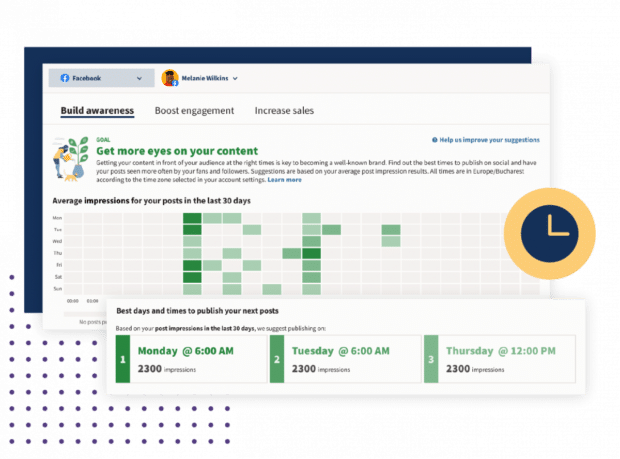
Hootsuite Analytics is available to Professional, Team, Business, and Enterprise plan users. Watch this 2-minute video to learn more about the feature.
Try it for free. You can cancel anytime.
Hootsuite Impact
Hootsuite Impact helps you track social customers all the way through your sales funnel, so you can analyze ROI metrics like conversions.
Custom graphs and charts help you present your findings in a visual way that resonates with stakeholders across the organization.
Hootsuite Impact is available to Enterprise Plan users.
Hootsuite Social Advertising
Hootsuite Social Advertising is unique in that it allows you to track metrics for paid and organic social content on multiple social media platforms all in one place. This allows you to understand your metrics in context and get a better sense of how the different types of content work together, rather than in isolation. Using this feature, you can review organic and paid content side by side, easily pull actionable analytics and build custom reports to prove the ROI of all your social campaigns.
With a unified overview of all social media activity, you can act fast to make data-informed adjustments to live campaigns (and get the most out of your budget). For example, if an ad is doing well on Facebook, you can adjust ad spend across other platforms to support it. On the same note, if a campaign is flopping, you can pause it and redistribute the budget — all without leaving your Hootsuite dashboard.
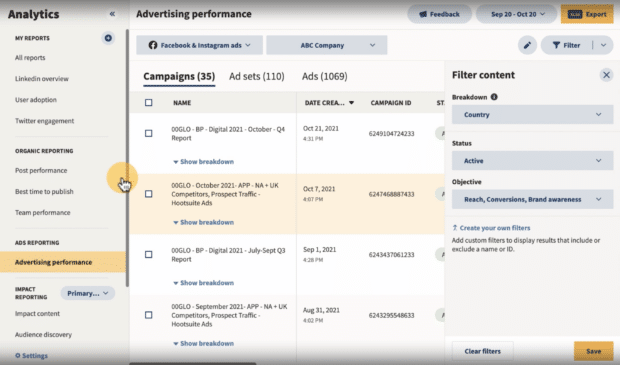
Hootsuite Social Advertising is available to Enterprise Plan users. Watch this 3-minute video to learn more about the feature.
References:
Peters, Kay, et al. “Social media metrics—A framework and guidelines for managing social media.” Journal of interactive marketing 27.4 (2013): 281-298.
All your social media analytics in one place. Use Hootsuite to see what’s working and where to improve performance.
The post 16 Key Social Media Metrics to Track in 2022 [BENCHMARKS] appeared first on Social Media Marketing & Management Dashboard.
![16 Key Social Media Metrics to Track in 2022 [BENCHMARKS]](https://localseoresources.com/wp-content/uploads/2022/05/social-media-metrics-5-620x752.jpeg)

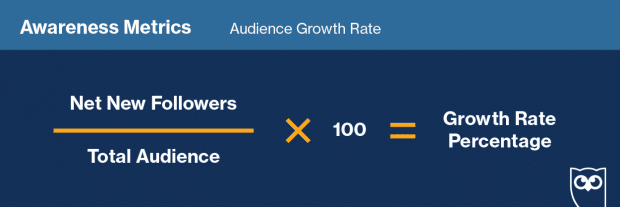
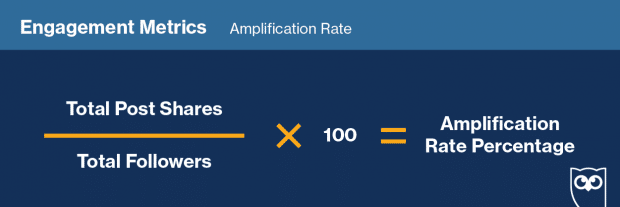
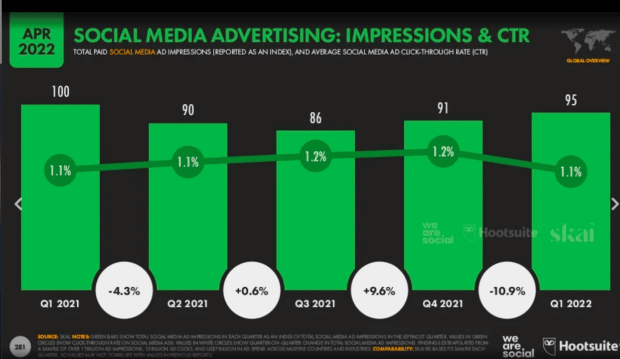
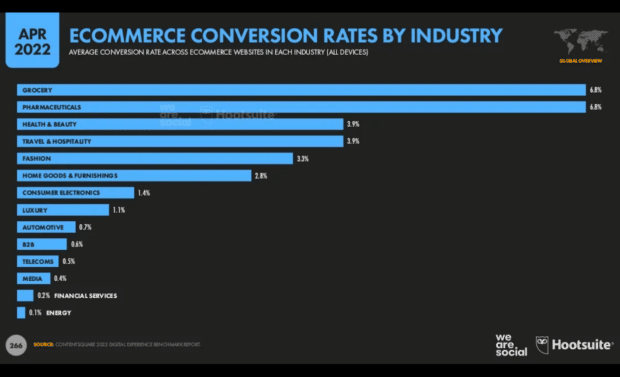
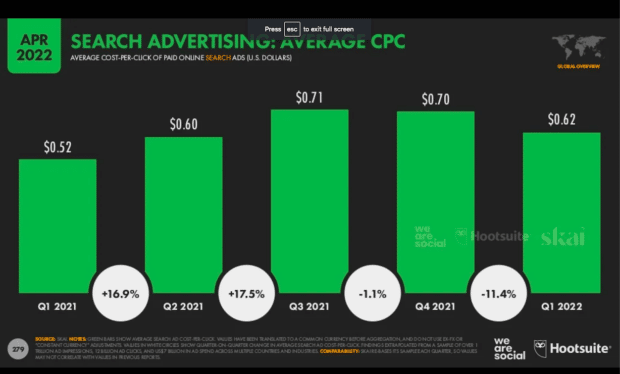
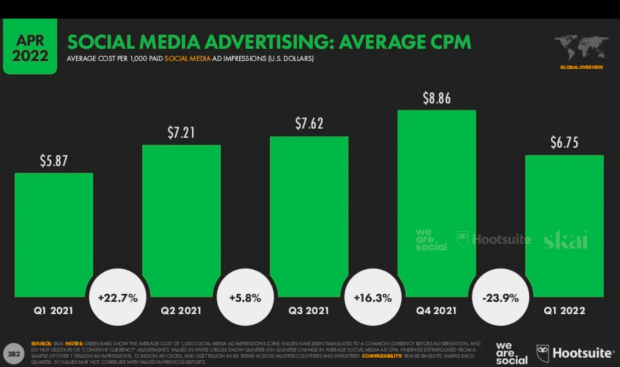
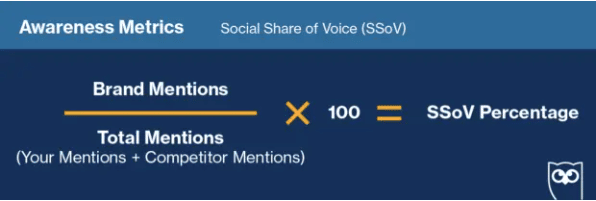





Recent Comments